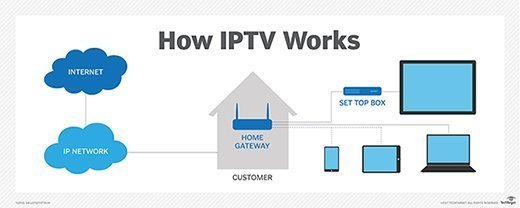How does IPTV work?
IPTV content is often delivered over a managed or dedicated network.
Compared to the public internet, a private network gives network operators more control over the video traffic and, by extension, the ability to ensure quality of service (QoS), uptime and reliability.
In traditional television delivery, all programming is broadcast simultaneously.
The available program signals flow downstream, and the viewer selects a program by changing the channel.
An IPTV service, by contrast, sends only one program at a time.
Content remains on the service provider’s network, and only the program the customer selects is sent to the residence.
When a viewer changes the channel, a new stream is transmitted from the provider’s server directly to the viewer.
Like cable TV, IPTV requires a set-top box or other customer-premises device.
IPTV primarily uses IP multicasting with Internet Group Management Protocol (IGMP) for live television broadcasts and Real-Time Streaming Protocol (RTSP) for on-demand programs.
Other common protocols include Real-Time Messaging Protocol (RTMP) and Hypertext Transfer Protocol (HTTP).

How IPTV works
Types of IPTV
Because IPTV uses a packet-based delivery system, it can be bundled with other IP-based services, such as voice over IP (VoIP) and high-speed internet.
IPTV competes with another delivery model known as Internet TV, which refers to television content distributed through a website.
You can use IPTV from anywhere around the world.